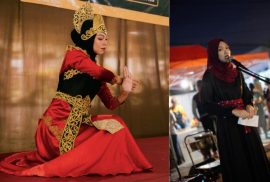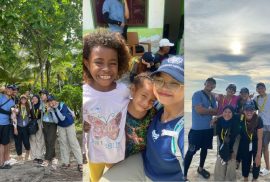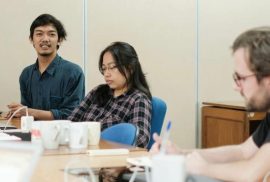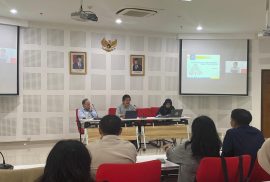Aisyah Riska, a student from the Master’s Program in Linguistics at the Faculty of Cultural Sciences, Universitas Gadjah Mada (UGM), is an inspiring figure hailing from South Sulawesi. Aisyah’s decision to continue her studies at UGM was a great decision. She aimed to earn her master’s degree and develop her potential in both academic and non-academic fields.
In the academic sphere, Aisyah has shown outstanding achievements. However, her excellence is not limited to academics alone. Aisyah is also active in various non-academic activities that enrich her experience and contribute positively to her surroundings.
As a person with a talent for the arts, Aisyah joined the Seni Pascasarjana UGM and served as the Head of the Theater Division. Additionally, she is active in Theater Gadjah Mada, a prominent theater organization at the university. Aisyah’s skill in theater not only hones her acting abilities but also enhances her communication and teamwork skills.
Not only active in arts organizations, Aisyah is also highly dedicated to the field of education. She actively teaches students from elementary to high school levels who are preparing for graduation exams or entrance exams for the next educational stage. Through this teaching, Aisyah hopes to make a tangible contribution to improving the quality of education for the younger generation.
Aisyah’s public speaking ability also allows her to have an exposure to the role of Master of Ceremony (MC) or moderator at various important events, both at the university level and events organized by local government agencies. Her role as an MC or moderator not only proves her communication skills but also showcases her confidence and high professionalism.
In addition to her academic achievements and involvement in various activities, Aisyah is also focused on being a content creator. Currently, she is part-time worker at the Unit of Public Relations and Cooperation FIB UGM. There, she is responsible for producing content focused on the TikTok platform.
Aisyah has produced many creative contents that have gone viral, demonstrating her ability to understand trends and audience needs. Through the content she has created, Aisyah not only promotes faculty activities and achievements but also provides inspiration and valuable information to many people.
Aisyah Riska’s story is a true example of a student who not only pursues academic excellence but also actively contributes in various fields. Despite her busy schedule and responsibilities, Aisyah continues to show high commitment and dedication. She is an inspiration to many other students to keep striving for their dreams and making a positive impact on society.
Aisyah Riska proves that with hard work, passion, and dedication, one can achieve various accomplishments and make a real contribution to their surroundings. May Aisyah’s inspirational story motivate more students to keep creating and achieving.






